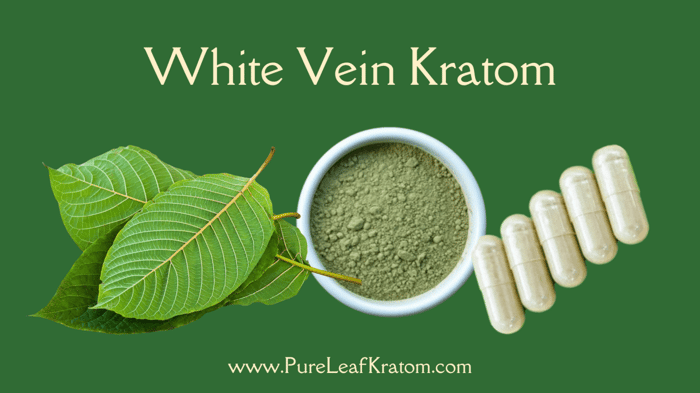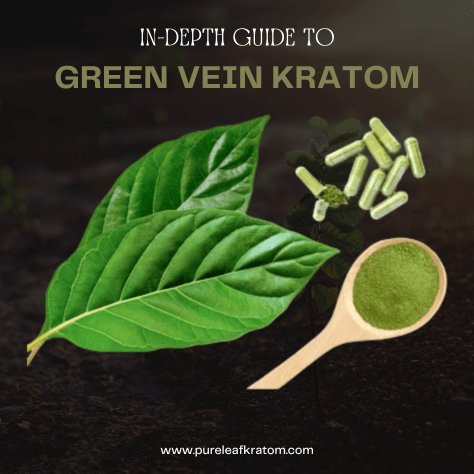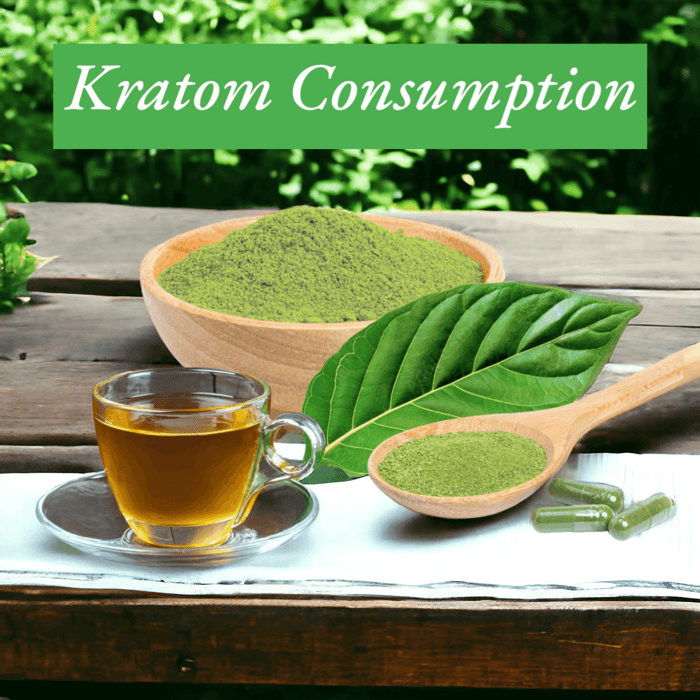
Understanding Kratom: An In-depth Examination of Its Consumption
Unveiling Kratom: A Tropical Curiosity
Emerging from the lush landscapes of Southeast Asia, Kratom, scientifically named Mitragyna speciosa, is a tropical tree with a profound history and intricate biochemistry. Belonging to the coffee family, this exceptional plant, integral to the global discourse on plant-based substances, is also renowned for its consumption.
$4.95 Pure Leaf Kratom White Borneo Powder Our sought-after Pure Leaf Kratom White Borneo Powder is making waves for its remarkable qualities that contribute to an...… read morePure Leaf Kratom Powder White Borneo
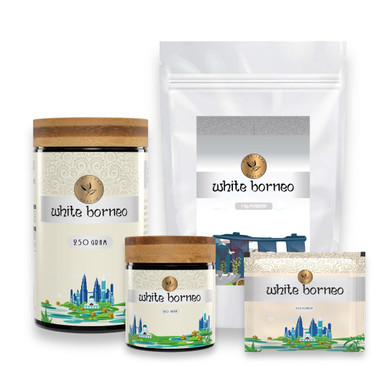
Nature’s Own Architecture: Revealing Mitragyna speciosa
The Kratom tree, a member of the Rubiaceae family, holds a prominent place in the diverse flora of tropical Asia. Characterized by its glossy leaves and sturdy trunk, the tree typically grows in the wild, reaching soaring heights of 50 feet and beyond. The leaves are the primary source of the plant's renowned alkaloids, their potency often influenced by the region and weather conditions.
Roots in Tradition: The Evolution of Kratom Consumption
The indigenous communities of Southeast Asia have a long-standing relationship with Kratom, with its usage embedded in many cultural practices and traditional medicine. Historically, Kratom leaves were consumed fresh or dried by local workers to boost their energy levels and tolerance to laborious tasks. Over time, methods of consumption evolved, and the plant found its way into global markets.
Discovering the Bioactive Network: Alkaloids in Kratom
Both the allure and the controversy surrounding Kratom stem from the diverse array of alkaloids present in its leaves. Although Kratom contains over 45 alkaloids, its major bioactive compounds are mitragynine and 7-hydroxymitragynine. These compounds interact with various receptors in the central nervous system, leading to an assortment of effects ranging from analgesic to anti-addiction and even antipsychotic.
Researchers have deciphered a fascinating mechanism behind the alkaloids' activity. The compounds not only affect opioid, adrenergic, serotonergic, and dopaminergic receptors but also interact with metabolic enzymes and efflux transporters like P-glycoprotein. Notably, mitragynine can cause up to a 6-fold increase in plasma levels of the CYP3A4 substrate midazolam. Thus, the interplay between Kratom alkaloids, enzymes, and transporters can mediate notable drug-drug interactions and alter its effect on the human body.
The alkaloids are extensively metabolized in the body, leading to a variety of phase I and phase II metabolites. While exhibiting potential therapeutic merits, it's essential to consider the risk of toxicity and interactions when discussing their pharmacological effects.
Research indicates that in addition to the psychoactive effects associated with mitragynine, some therapeutic benefits may include analgesic, anti-inflammatory, muscle relaxant, and anti-depressant properties through mu- and delta-opioid receptor agonism. However, chronic mitragynine consumption can lead to potential concerns like cognitive impairment, tolerance, and addiction, in addition to withdrawal symptoms reminiscent of opioid withdrawal. These complexities highlight the importance of a balanced understanding of Kratom’s various effects on the human body.
Whole Herbs Kratom Capsules Red Bali
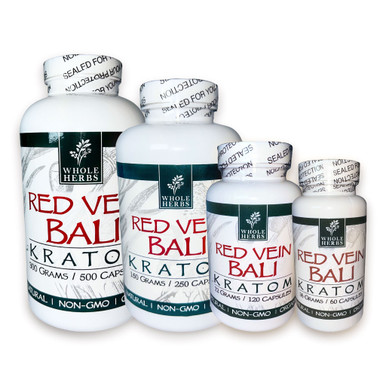
$9.69
Whole Herbs Kratom Capsules Red Bali Whole Herbs invites you to embark on a journey that resonates with the symphony of nature. Introducing our revered...… read more
Methods of Consumption
Brewing as Tea
Just think about sipping a hot cup of tea and relaxing over a chatter with your friends or family. That's almost similar to how Kratom was traditionally consumed in its original regions.
Detailed Steps in Tea Preparation
Steps in tea preparation:
- Boil three to four cups of water.
- Once boiled, add your desired amount of Kratom leaves or powder.
- Let it simmer for 10 to 15 minutes.
- Strain it into a cup, and savor your brew.
Perfecting the Brew: Tea, Take Time, Temperature, and Steeping Process
Tea steeping requires a good amount of time, usually about 20 to 30 minutes, to extract all of the potent alkaloids from the Kratom substance. Lowering your simmer temperature can also prevent the destruction of these key psychoactive components. To enhance the naturally bitter flavor of the tea, users often add sweeteners like honey or lemon. There are also instances where mint or similar herbs are infused for a more complex flavor profile.
Traditional Add-Ins and Their Purposes
As stated above, the naturally bitter and earthy flavor of Kratom may not be appealing to everyone. In such cases, adding sweet additives like sugar, honey, or flavored syrups can mask the bitterness. Lemon or other citrus is sometimes added as it is believed to potentiate the effects of Kratom due to its acidic nature. Other spices may be used to vary the flavors based on personal preferences.
Effects and How They Differ From Other Methods
When consumed as a tea, the body quickly absorbs the alkaloids present, providing a near-instant effect. However, this faster onset often results in a shorter duration of effects, usually lasting around 2 to 3 hours. This differs significantly from other consumption methods where the onset might be delayed, but the duration is much longer.
Cultural Significance or Notable Mentions of the Tea method
In Southeast Asia, Kratom tea has been used for centuries as part of traditional medicine practices to help alleviate fatigue, improve mood, and manage pain. It was traditionally used by workers who performed long hours of manual labor as an energy booster, similar to how the western world uses coffee.
Chewing Leaves
Like chewing tobacco or coca leaves, chewing freshly plucked Kratom leaves is a common form of consumption in the regions where the Kratom tree grows naturally.
Understanding the Process of Chewing Kratom Leaves
Steps in chewing Kratom leaves:
- The leaves are freshly plucked from the tree.
- They are generally washed to remove any soil or foreign particles.
- Leaves are folded or rolled into a bolus (chewable bundle).
- The wad of leaves is placed in the corner of the mouth and chewed intermittently to release the alkaloids.
From Tree to Mouth: Harvesting and Prepping the Leaves
The fresher the leaf, the more potent the effects. So, local consumers and farmers prefer to pluck the leaves directly from the tree. In the traditional process, there is no curing or drying; the fresh leaves are consumed directly. Preserving fresh leaves outside the cultivation area can be challenging, which is why this method is not commonly seen outside Southeast Asia.
Etiquettes or Associated Tradition with Leaf Chewing
Just as with any ancient practice, the chewing of Kratom leaves was practiced with certain etiquettes. Traditionally, the locals believed that one must not walk under the tree while chewing its leaves. The indigenous people treated the Kratom trees with great respect and took their myths seriously as a tribute to nature.
Dissection of Effects and Uniqueness of Chewing Method
By chewing the fresh leaves, users can directly ingest the alkaloids, producing a simultaneous stimulating and sedative effect. The onset of effects is instant and is described as being sharper compared to the more mellow experience of drinking tea.
K Shot Kratom Liquid Extract
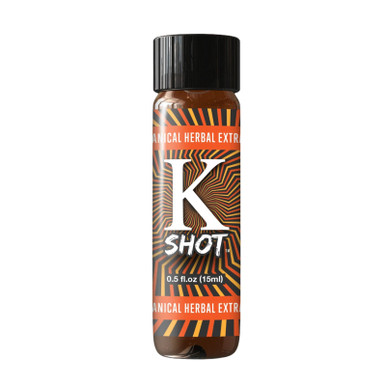
$11.25
Explore the remarkable potential of K Shot Kratom Liquid Extract, a meticulously crafted botanical supplement designed to enhance your overall well-being. Through an innovative extraction...… read more
Smoking
Smoking Kratom is not as common as the other methods of consumption but is still a method used by some people.
A Concise Guide to Smoking Kratom
Steps in smoking Kratom:
- The Kratom leaves are first dried thoroughly.
- Then they are either directly smoked using a pipe, or ground into powder form to roll into cigarettes.
- The smoking should be done in a well-ventilated area and a controlled manner.
A Look at the Preparation Process
The main consideration for smoking Kratom is to have thoroughly dried leaves, as excess moisture can interfere with the smoking process. It is also important to note that smoking Kratom requires larger quantities of the leaf or powder compared to other forms of consumption methods.
Do's and Don'ts
If someone decides to smoke Kratom, they should do so responsibly and in moderation. Overuse can lead to a faster build-up of tolerance. Ensuring proper ventilation while smoking is crucial to reduce the risk of inhaling second-hand smoke. It is strongly recommended not to mix Kratom with other harmful substances.
In-Depth Analysis of Effects When Smoked Versus Other Methods
The onset of the effects of smoking is almost immediate, and the peak effects can last up to 10 minutes. The overall duration, however, is often much shorter than when consumed orally, usually around an hour or so.
Ingesting Kratom as Capsules
Taking Kratom in capsule form is one of the popular methods. It is easy and discretely allows on-the-go consumption.
Deep-Dive Into the Encapsulation Process
Kratom capsules are created by filling pill capsules with Kratom powder. They are generally favored for their ease of use and for their ability to mask the bitter taste of the Kratom powder. Moreover, it allows for a more controlled and measured consumption.
Powder Preparation
To create the powder for encapsulation, the Kratom leaves are harvested, dried, and ground into a powder. This is most commonly done by processors and is a meticulous process that requires strict standards to ensure quality and safety.
Filling and Sealing Capsules
Filling the capsules involves monitoring the consistency and weight of the powder that goes into each capsule. The filled capsules are then sealed to ensure they remain intact and make it easier to take orally. Once encapsulated, the capsules can then be easily swallowed with a drink of water.
Effectiveness of Capsules and Comparison With Other Consumption Methods
When taken as capsules, Kratom's effects have a slower onset, as the capsule has to disintegrate in the stomach before the powder can be absorbed. However, the effects last longer, typically in the range of 5 to 7 hours. This slower onset but longer duration makes it suitable for people who seek prolonged relief.
Legal Status of Kratom
The legality of Kratom is not straightforward; it varies significantly around the world and even within the United States. Its complex legal standing can be attributed to a number of factors, including its psychoactive effects, potential for misuse, and lack of definitive research on its safety and efficacy.
Countries Where Kratom is Illegal
In several nations, Kratom is completely outlawed. It's crucial to know that Australia, Denmark, Finland, Israel, Lithuania, Malaysia, Myanmar, Poland, Romania, South Korea, Sweden, and Thailand have made Kratom use illegal. In these places, possession, consumption, or trafficking of Kratom could lead to penalties, such as fines, imprisonment, or both. Behind these bans, crucial factors are often cited such as public health concerns, potential for abuse, and the lack of control over the substance's manufacturing and distribution. There have also been instances of prosecutions in these countries.
U.S. States Where Kratom is Banned or Regulated
Even within the United States, the legal status of Kratom is not uniform and varies from state to state. Though generally legal or unregulated in most states, it is currently banned in Alabama, Arkansas, Indiana, Rhode Island, Vermont, and Wisconsin. The reasons behind these statewide bans differ, but often they stem from concerns over its opioid-like effects and potential for misuse, lack of FDA approval, and public health considerations. There have also been legal battles and notable court cases involving Kratom use in the U.S., further demonstrating the ongoing controversy surrounding this substance.
Understanding Gray Zones: Countries Where Kratom is Unregulated or Status is Ambiguous
There are also situations where the legal status of Kratom is not clearly defined, resulting in "gray zones". In countries such as Canada and New Zealand, the status of this substance is complex and filled with ambiguities, often due to differing interpretations of the law. In these regions, it’s crucial for consumers and potential users to thoroughly research local laws and potential legal implications associated with Kratom use.
Emphasizing the Importance of Checking Local and Regional Laws
The varied, often intricate legal landscape surrounding Kratom underlines the need for individuals to stay informed about their local and regional laws before deciding to use this substance. Legal sanctions could be severe in certain regions even while neighboring regions have no such regulations. It's also vital to realize that legal frameworks and stipulations can change over time, further emphasizing the need to stay regularly updated on this matter.
There are numerous resources available online to help keep track of changes in Kratom's legal status, both domestically and abroad. Nonetheless, it's always a smart practice to consult with legal professionals or reputable websites for precise and updated information. Understanding the legal implications is an important aspect when interpreting how societies regard and control the usage of substances like Kratom.
Also remember, this article is intended to provide a balanced understanding of the various ways Kratom can be consumed, its legal status, and warnings of potential hazards. It doesn’t endorse or promote the use of Kratom, and emphasizes responsible usage and awareness of associated risks.



